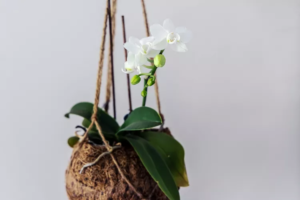It’s heartbreaking to see a beloved houseplant looking sad and unhealthy, but don’t give up on it just yet! Many struggling plants can be revived with a little TLC and the right care. Whether your plant is drooping, yellowing, or losing leaves, this guide will walk you through the steps to diagnose the problem and nurse it back to health. Let’s roll up our sleeves and save your plant!
Step 1: Diagnose the Problem
The first step to saving your plant is figuring out what’s wrong. Here are some common issues and their causes:
1. Overwatering
- Symptoms: Yellowing leaves, mushy stems, or a foul smell from the soil.
- Cause: Roots are drowning and may be rotting due to lack of oxygen.
2. Underwatering
- Symptoms: Dry, crispy leaves, drooping, or soil pulling away from the pot edges.
- Cause: The plant isn’t getting enough water to sustain itself.
3. Poor Lighting
- Symptoms: Leggy growth, pale leaves, or lack of new growth.
- Cause: The plant isn’t receiving enough light to photosynthesize properly.
4. Pests
- Symptoms: Visible bugs, sticky residue, or tiny holes in leaves.
- Cause: Insects like spider mites, aphids, or mealybugs are feeding on the plant.
5. Nutrient Deficiency
- Symptoms: Yellowing leaves, stunted growth, or weak stems.
- Cause: The plant isn’t getting enough essential nutrients from the soil.
6. Temperature Stress
- Symptoms: Wilting, leaf drop, or brown edges.
- Cause: The plant is exposed to drafts, extreme heat, or cold.
Step 2: Take Action to Revive Your Plant
1. Adjust Watering Habits
- For Overwatered Plants:
- Stop watering immediately and let the soil dry out.
- Remove the plant from its pot and inspect the roots. Trim any rotten roots and repot in fresh, well-draining soil.
- Ensure the pot has drainage holes to prevent future overwatering.
- For Underwatered Plants:
- Give the plant a thorough soak by placing it in a sink or tub filled with water for 15–30 minutes.
- Let excess water drain away, then return it to its spot.
- Adjust your watering schedule to keep the soil consistently moist but not soggy.
2. Improve Lighting Conditions
- Move the plant to a brighter spot with indirect light if it’s not getting enough sun.
- If natural light is limited, consider using a grow light to supplement.
- Rotate the plant regularly to ensure even growth.
3. Treat Pests
- For Small Infestations: Wipe leaves with a damp cloth or use a gentle spray of water to remove pests.
- For Larger Infestations: Apply insecticidal soap or neem oil, following the product instructions.
- Isolate the affected plant to prevent pests from spreading to others.
4. Fertilize Appropriately
- Use a balanced, water-soluble fertilizer during the growing season (spring and summer).
- Avoid over-fertilizing, as this can burn the roots and cause more harm than good.
5. Adjust Temperature and Humidity
- Keep plants away from drafts, radiators, and air conditioners.
- Increase humidity by misting the plant, using a humidifier, or placing it on a pebble tray with water.
Step 3: Prune and Clean
- Remove Dead or Damaged Leaves: Use clean, sharp scissors to trim away yellow or brown leaves. This helps the plant focus its energy on healthy growth.
- Clean the Leaves: Wipe the leaves gently with a damp cloth to remove dust and improve photosynthesis.
Step 4: Be Patient and Monitor Progress
Reviving a struggling plant takes time, so don’t expect overnight results. Keep an eye on your plant and adjust care as needed.
- Signs of Recovery: New growth, greener leaves, and a perkier appearance.
- If the Plant Doesn’t Improve: Consider propagating healthy cuttings to start anew.
Prevent Future Problems
Once your plant is back on track, follow these tips to keep it healthy:
- Stick to a Watering Schedule: Check the soil moisture regularly and water only when needed.
- Provide Proper Light: Match your plant’s light requirements to its placement in your home.
- Inspect Regularly: Check for pests, yellowing leaves, or other signs of trouble.
- Repot When Necessary: Refresh the soil and upgrade the pot size as your plant grows.
Final Thoughts
Don’t give up on your struggling houseplant just yet! With a little patience and the right care, you can often bring it back to life. By diagnosing the problem, adjusting your care routine, and providing a little extra love, you’ll be amazed at how resilient your plant can be. So grab your watering can, pruning shears, and a positive attitude—your plant is counting on you! Happy saving!







